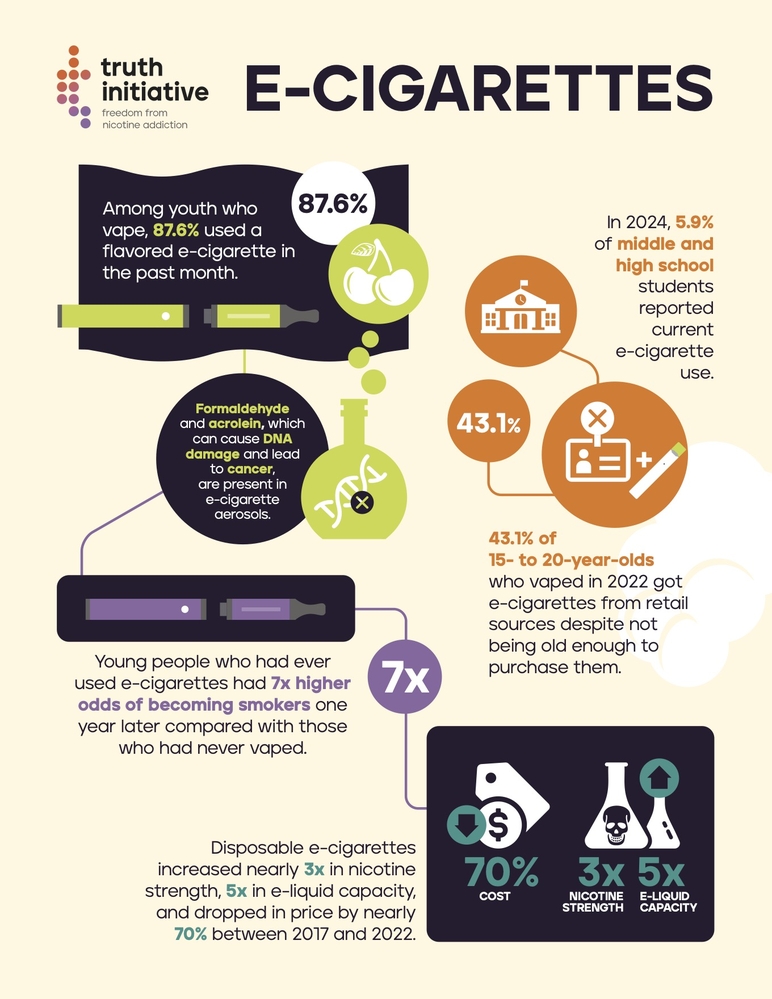E-cigarettes deliver nicotine, flavorings, and other chemicals via an inhaled aerosol. While likely less harmful than traditional cigarettes for adult smokers who completely switch, they are not safe, particularly for youth, young adults, pregnant women, and never-smokers.
10 Mechanisms of Potential Harm
- Nicotine Addiction: Highly addictive, harms adolescent brain development, increases cardiovascular strain.
- Lung Injury (EVALI): Associated with severe lung illness, particularly linked to Vitamin E acetate in THC-containing vapes.
- Toxic Flavorings: Chemicals like diacetyl (butter flavoring) cause “popcorn lung” (bronchiolitis obliterans).
- Volatile Organic Compounds (VOCs) & Fine Particulates: Damage lung tissue, contribute to inflammation and respiratory illness (e.g., formaldehyde, acrolein).
- Heavy Metal Exposure: Aerosols contain nickel, tin, lead from heating coils/wick.
- Impaired Lung Function: Causes coughing, wheezing, asthma exacerbations, increased bronchial sensitivity.
- Cardiovascular Stress: Nicotine and particulates increase heart rate, blood pressure, and potentially long-term cardiovascular disease risk.
- Immunosuppression: Inhalation alters immune cell function in lungs.
- Dual Use: Using e-cigarettes and cigarettes sustains high toxin exposure and harm.
- Gateway to Smoking: Young e-cigarette users are significantly more likely to start smoking combustible cigarettes.
Critical Safety Facts
- Not FDA-Approved Quit Devices: While some may use them to quit smoking, many products contain high nicotine levels without proven cessation superiority.
- Secondhand Aerosol: Exposes bystanders to nicotine and ultrafine particles.
- Product Risks: Battery malfunctions can cause fires/explosions; accidental liquid nicotine poisoning (ingestion/skin contact) is dangerous.
The safest choice is avoiding both e-cigarettes and traditional cigarettes. Smokers considering e-cigarettes for quitting should consult healthcare providers about proven cessation methods first.











